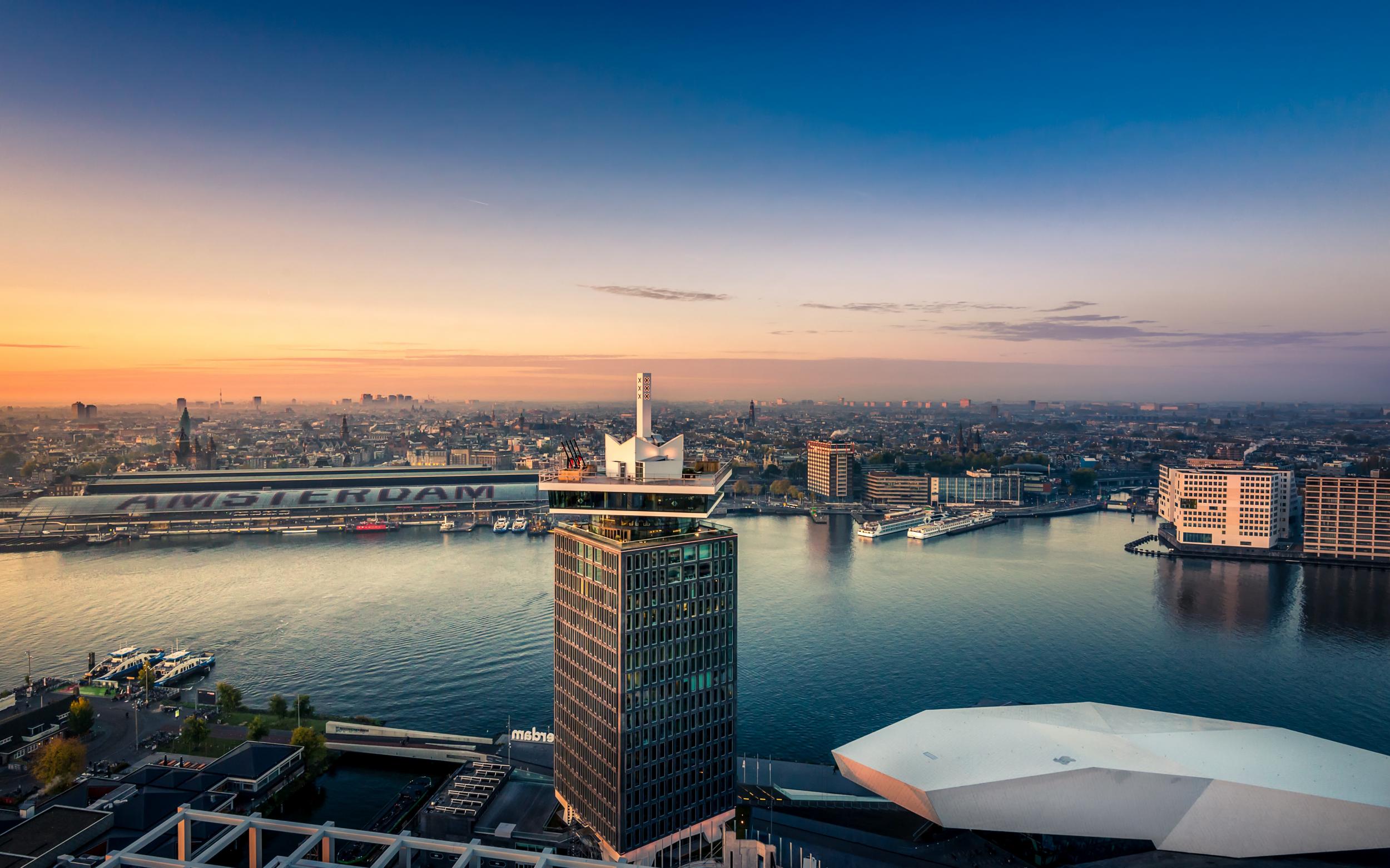Why Noord is Amsterdam’s hottest hood right now
The spectacular transformation of an industrial eyesore in Amsterdam

My favourite mode of transport in Amsterdam isn’t bike, or the bendy blue trams. It’s the ferries that leave every three or four minutes from the back of Centraal station, to chug across the harbour – a free five-minute journey during which I’ll squeeze alongside foot passengers and tiny two-person Canta cars to stand starboard and soak up the views of Amsterdam’s ever-changing skyline.
The ferries provide easy access to Amsterdam Noord, once a gritty, industrial neighbourhood where waterfront living was a necessity for its sailors and merchants. But in the 1980s, Amsterdam’s maritime industries started to struggle. Sprawling housing projects were built alongside empty wastelands which had once been bustling dockyards. In 2012, Amsterdam’s film museum, EYE Film Institute Netherlands, relocated to Noord. This huge spaceship-like building, easily visible to those piling off the trains at Centraal, kickstarted the area’s transformation. The construction of the Noord/Zuidlijn (North/South) metro line made access even easier.
What I love most about Noord is its ability to transform without forgetting its roots. Take De Ceuvel. In 2012 a group of architects decided to turn an oil-soaked former shipyard on the banks of Noord’s Johan van Hasselt canal into an urban oasis. Today, a snake-like wooden jetty winds between houseboats lovingly transformed into homes and workshops. There’s an abundance of greenery – houseboats rest on land saturated with oil from long-gone ships, and plants are chosen for their phyto-remediating (soil-purifying) qualities. At Café de Ceuvel, a once-derelict lifeguard station, visitors sip homemade fizzy drinks and order bitterballen (meatballs) made with mushrooms grown nearby, on recycled coffee grounds. There’s a small floating hotel, and regular art exhibitions and workshops. Visitors are encouraged to get involved: there are tours of the site, and volunteers come to plant toxin-absorbing greenery.
Read more: Best cheap hotels in Amsterdam
De Ceuvel’s upcycled barges were once people’s homes – its founders asked locals for unwanted houseboats. They ended up with a surplus, and donated many to nearby NDSM, a former Amsterdam Noord shipyard which epitomises how creative thinkers are breathing new life into this once-neglected area. Visitors with a head for heights can spend the night in NDSM’s crane, in a suite tucked into the bright red framework. The interiors are explosions of minimalist chic: headboards made from metal slabs, softened with antiques salvaged from Dutch sailing ships.

Metres from the crane, I spot a building shaped like two people having sex. “What’s inside it?” I ask my guide as two ladies squeeze past us and head on in. “Those two women,” she replies with a baffled shrug, as if buildings shaped like two copulating stick-men are nothing unusual. I later find out it’s one of NDSM’s many exhibition spaces. Over at NDSM’s IJ-Hallen warehouse, Europe’s largest flea market is in full swing. The monthly event takes over half the building. The other half houses a range of tenants (including architects and artists) who work out of colourful shipping containers. There’s a handful of boutiques and cafes, too.

Nearby are more containers, piled in a haphazardly stacked tower. One has its metal doors flung open and I step into its rusting hulk. I assume the heavy, industrial doors on its side lead back outside, but they open into a beautiful, light-filled space overlooking the water: Pllek, one of Amsterdam’s coolest restaurants. Beneath a huge curving roof are layers of shipping containers, hollowed out and stuck together like Lego bricks. On a bright autumn day, the most popular spots are the sofas surrounding the indoor fire pits – nab a seat here and you’ll enjoy fantastic views over the water, and easy access to the urban beach on the other side of the floor-to-ceiling windows.

Pllek is typical of the restaurants popping up here. At NDSM’s cafe-restaurant Stork, the tables are the huge, upended spindles once used to store coils of shipping rope. Ironically, the restaurant with the most authentically industrial feel – Noord’s Hangar restaurant, where head chef Ricardo van Ede serves up delicious, hearty classics made with the local ingredients – is a fraud. But don’t let that put you off. Diners sit beneath a colourful patchwork of metal panels I’d assumed once sheltered a ship, but a manager explains the entire place was built from scratch in 2015. Fabric lanterns dangle from the colourful corrugated ceiling, and circular radiator coils double as art installations.

Another advantage of life here is the easy access to the vast tracts of greenery on Amsterdam’s outskirts. I’m staying at the Sir Adam, a gorgeous design hotel in the former offices of Royal Dutch Shell. The elevators double as karaoke rooms and I can use the record player in my room to play the vinyl I borrow from the music library in the lobby.

There’s also a fleet of bikes. I’ve cycled in Amsterdam before, but this time I’m using my wheels not to wobble from one bar to the next but to explore the park-lined cycle paths fanning out into the countryside from Noord. Within minutes of setting off I’m pedalling through heron-filled parks, flying along smooth bicycle lanes past the pretty window boxes of houses in Buiksloot, Ransdorp and Nieuwendam – former villages which became part of Amsterdam in the 1920s. Today, they retain their rural feel, despite being so close to the city centre.
I’ve always loved Amsterdam, but it dawns on me that most of my visits have been confined to the main tourist drags, barring a few explorations of lesser-known neighbourhoods. My foray across the river has proved that occasionally, the grass really is greener on the other side.
Travel essentials
Getting there
Easyjet flies from London Gatwick to Amsterdam from £23.99 one way.
Staying there
Doubles at the Sir Adam Hotel from £156, room only.
More information
Join our commenting forum
Join thought-provoking conversations, follow other Independent readers and see their replies
Comments
Bookmark popover
Removed from bookmarks